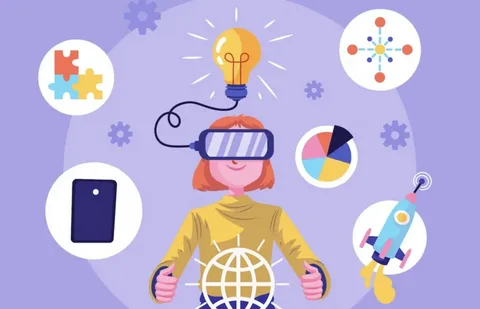In today’s competitive business landscape, brands are constantly seeking innovative ways to engage with their target audience and differentiate themselves from competitors. One strategy that has gained significant traction in recent years is gamification marketing. Gamification marketing involves integrating elements of gaming, such as challenges, rewards, and competition, into marketing campaigns to captivate and motivate consumers. By leveraging the inherent human desire for achievement and entertainment, gamification marketing tactics can effectively boost brand awareness, increase customer engagement, and drive sales.
Creating Interactive Brand Experiences
One powerful gamification marketing tactic is to create interactive brand experiences that invite consumers to actively participate and engage with the brand. For example, a clothing retailer could develop a virtual dressing room app that allows customers to try on different outfits using augmented reality technology. By gamifying the shopping experience in this way, the retailer not only provides entertainment value to customers but also encourages them to explore and interact with the brand’s products in a fun and immersive way.
Another effective gamification marketing tactic is to gamify loyalty programs and rewards systems. Instead of offering traditional loyalty programs based solely on purchases, brands can introduce gamified elements such as challenges, badges, and levels to incentivize desired behaviors from customers. For instance, a coffee chain could create a mobile app where customers earn points and unlock rewards by completing challenges like trying new menu items or visiting the store during off-peak hours. By gamifying loyalty programs, brands can increase customer engagement, foster brand loyalty, and drive repeat business.
Enhancing Customer Engagement
Gamification marketing offers brands a unique opportunity to enhance customer engagement by creating interactive and memorable experiences. One effective tactic is to gamify social media interactions by encouraging user-generated content and participation. For example, a cosmetics brand could launch a hashtag challenge where customers share photos of themselves using the brand’s products, with the chance to win prizes or be featured on the brand’s social media channels. By gamifying social media engagement, brands not only increase their reach and visibility but also foster a sense of community and belonging among their audience.
Another gamification marketing tactic for enhancing customer engagement is to gamify content consumption experiences. Brands can create interactive quizzes, polls, or challenges related to their products or industry to make content more engaging and shareable. For example, a tech company could develop a quiz that tests users’ knowledge of the latest gadgets and offers rewards for correct answers. By gamifying content consumption, brands can capture and maintain audience attention, drive website traffic, and increase brand affinity.
Driving Sales and Conversions
Gamification marketing tactics can also be highly effective in driving sales and conversions for brands. One tactic is to gamify the shopping experience by introducing elements of competition and urgency. For instance, an e-commerce website could run limited-time flash sales or gamified promotions where customers compete to unlock exclusive discounts or prizes. By tapping into consumers’ competitive instincts and desire for rewards, brands can drive sales and create a sense of excitement around the purchasing process.
Another effective gamification marketing tactic for driving sales is to gamify the referral process. Brands can incentivize customers to refer friends and family by offering rewards or bonuses for successful referrals. For example, a subscription service could offer existing customers a discount on their next purchase for every new customer they refer. By gamifying the referral process, brands can leverage the power of word-of-mouth marketing and turn existing customers into brand advocates who actively promote the brand to others.
Measuring and Optimizing Gamification Campaigns
While gamification marketing can be a powerful tool for boosting brand engagement and driving sales, it’s essential for brands to measure and optimize their gamification campaigns to ensure maximum effectiveness. Brands can use key performance indicators (KPIs) such as engagement metrics, conversion rates, and customer retention rates to evaluate the success of their gamification initiatives. By analyzing these metrics, brands can identify areas for improvement and make data-driven decisions to optimize their gamification campaigns for better results.
Furthermore, brands can leverage advanced analytics and machine learning algorithms to gain deeper insights into user behavior and preferences. By analyzing large datasets, brands can identify patterns, trends, and correlations that can inform their gamification strategies. For example, predictive analytics can help brands anticipate customer behavior and personalize gamification experiences based on individual preferences and past interactions.
Once brands have gathered data on the performance of their gamification campaigns, it’s essential to iterate and optimize based on the insights gained. A/B testing, or split testing, can be a valuable tool for testing different gamification elements, such as rewards structures, game mechanics, and user interface design. By comparing the performance of different variations, brands can identify which elements resonate most with their target audience and optimize their campaigns accordingly.
Measuring and optimizing gamification campaigns is essential for brands to maximize the effectiveness of their marketing efforts. By using KPIs, qualitative feedback, advanced analytics, and iterative testing, brands can gain valuable insights into the performance of their gamification initiatives and make data-driven decisions to optimize their campaigns for better results. By continuously monitoring and refining their gamification strategies, brands can stay ahead of the competition, engage customers more effectively, and drive long-term success in today’s dynamic marketplace.
Additionally, brands should continuously monitor and refine their gamification campaigns to stay relevant and effective in a rapidly evolving market landscape. Trends in gaming technology, consumer preferences, and industry best practices can all influence the success of gamification initiatives. By staying informed and adaptable, brands can ensure that their gamification campaigns remain engaging, impactful, and aligned with their overall marketing objectives.
Conclusion
In conclusion, gamification marketing offers brands a powerful and innovative way to boost brand awareness, increase customer engagement, and drive sales. By integrating gaming elements into marketing campaigns, brands can create interactive and memorable experiences that captivate and motivate consumers. Whether through creating interactive brand experiences, enhancing customer engagement on social media, driving sales and conversions, or measuring and optimizing gamification campaigns, the potential for brands to leverage gamification marketing tactics is vast. By embracing gamification, brands can differentiate themselves in the competitive marketplace, foster brand loyalty, and achieve long-term success in engaging and retaining customers.



